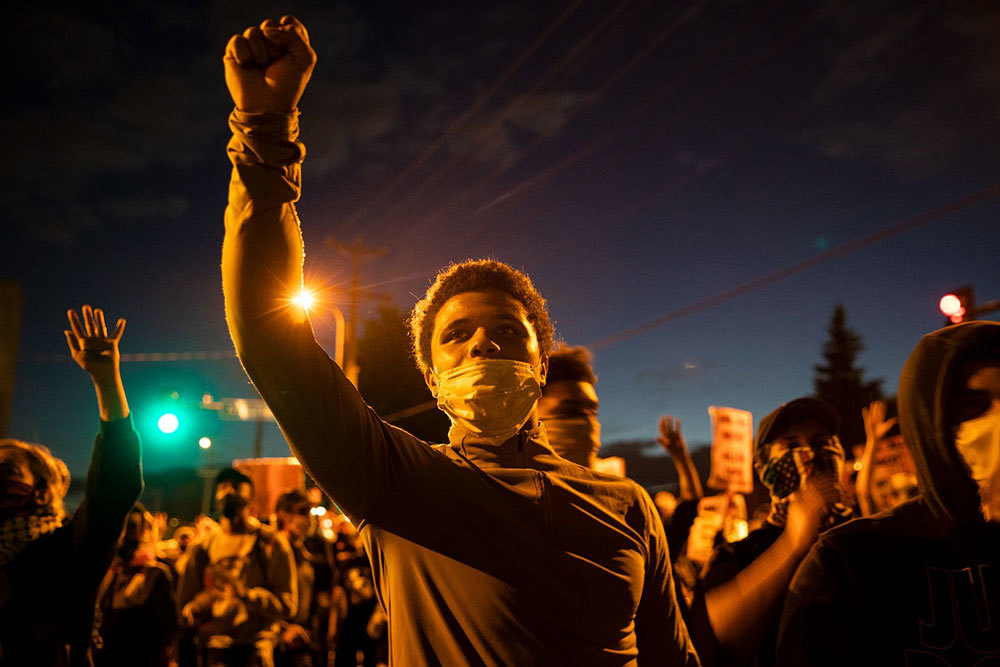 |
PHOTOGRAPHS BY DAVID GUTTENFELDER
|
|
By Debra Adams Simmons, HISTORY Executive Editor
Why would thousands of people across the United States forfeit health and safety in the midst of a pandemic to come together to protest? Many see racism and police brutality as far greater threats than the novel coronavirus.
COVID-19 has unmasked stark, structural inequality in the U.S. Blacks are dying disproportionately, working in essential jobs that expose them to the virus, losing jobs or having pay reduced at alarming rates. The killing of George Floyd by a police officer, at this troubled time, is seen as another example of the racism that permeates this country. (Above, protesters outside a Minneapolis police station on Friday night).
"When you see that in front of witnesses, the agent of the state will kneel on a man's neck as he's begging for his life until the life seeps out of his body ... You can't just picture that happening to white Americans," New York Times journalist Nikole Hannah-Jones told Good Morning America.
Protest, historically, has been the catalyst for change from the Civil War to the Civil Rights Movement.
“I don’t want to see stores looted or even buildings burn but African Americans have been living in a burning building for many years, choking on the smoke as the flames burn closer and closer,” NBA Hall of Famer Kareem Abdul-Jabbar wrote for the Los Angeles Times. “Racism in America is like dust in the air. It seems invisible—even if you’re choking on it—until you let the sun in. Then you see it’s everywhere.”
As events tumble atop each other in the days and weeks ahead, know that historians will attempt to untangle and unravel them. Meantime, African American parents will again have The Talk with their children, the sad but necessary directive about staying alive amid perilous encounters with police.
In this All-Of-The-Above Year (racism, pandemic, economic devastation, political instability), history is vital to giving us perspective, to knowing where humans failed before—and where they prevailed. It guides us when despair shouts.
"My mind has been blown like a candle. I am nothing but an embodied grumble, like everyone else." That’s what historian Eileen Power wrote—in 1939—on the rise of Hitler and the start of World War II.
Nearly a decade later, in the novel The Plague, Albert Camus noted that people enduring chaos have to hold two conflicting things in their mind at the same time. The bacteria of a plague, like the poison of fascism or tyranny, "never dies or disappears." However, "what we learn during a time of pestilence," Camus added, is "that there are more things to admire in [people] than despise.“ (Below, family and friends gather at the spot where George Floyd was killed.)
Do you get this newsletter daily? If not, sign up here or forward to a friend. |
|
|
|
|
Comments